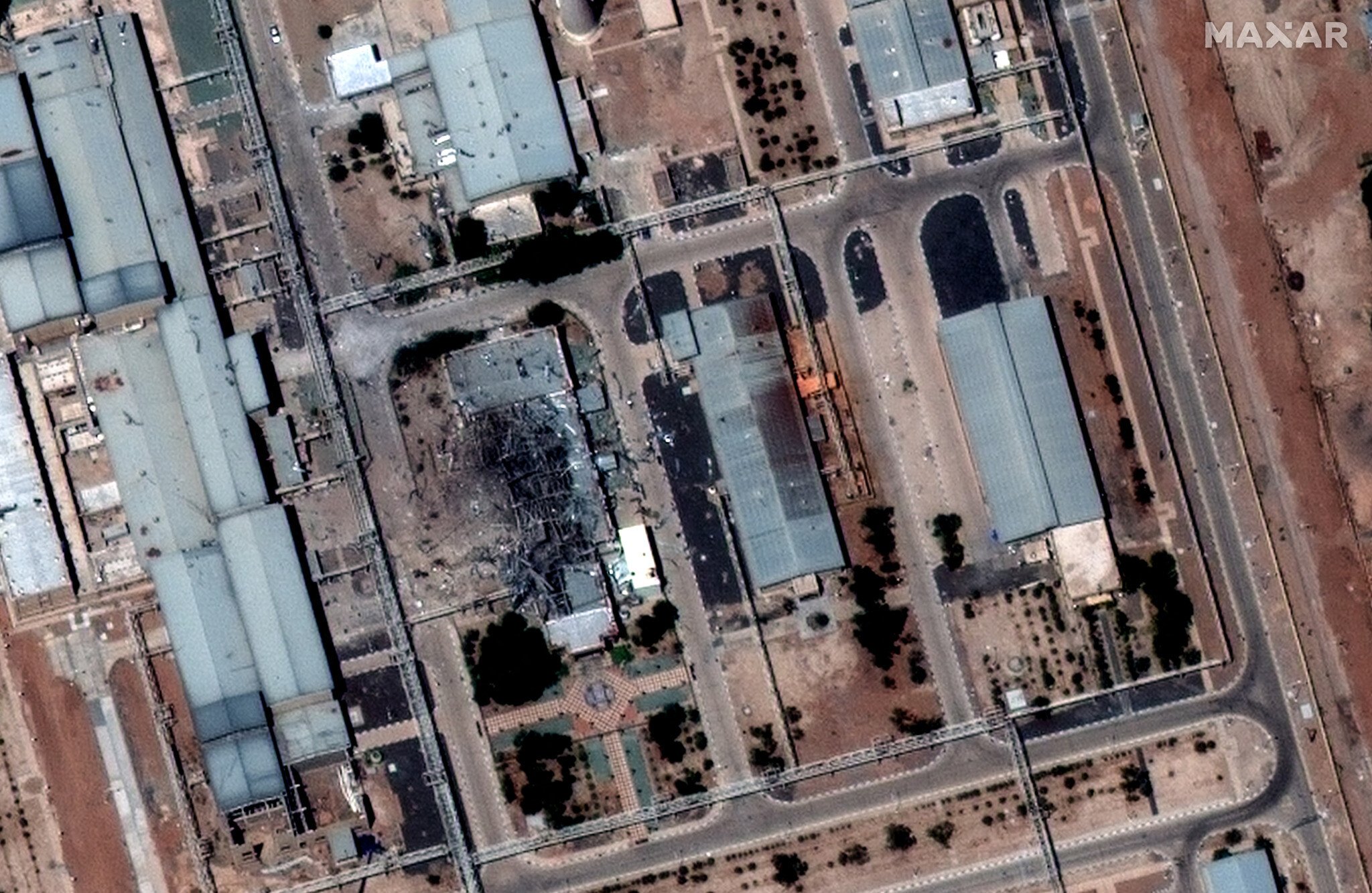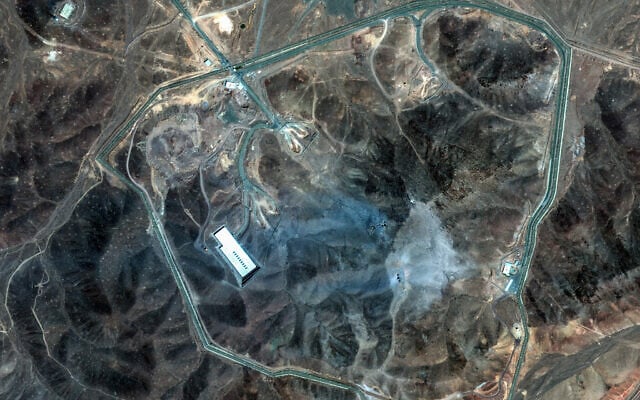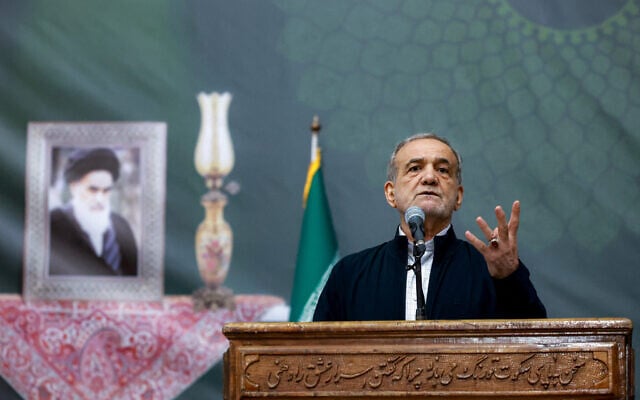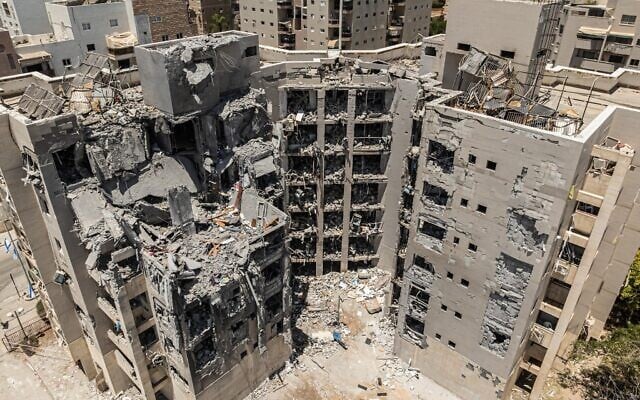



A senior Israeli official said Thursday that Israeli intelligence shows that Iran’s stockpile of enriched uranium had not been removed from Fordo, Natanz, and Isfahan before the three nuclear sites were struck by the US last month amid Israel’s 12-day war with Iran, and has not been moved since.
The stockpiles of some 400 kilograms (880 pounds) of uranium enriched to 60 percent had not moved, the unnamed official told Reuters.
The official suggested, however, that the Iranians might still be able to gain access to the enriched uranium at Isfahan but that it would be very difficult to remove it.
Speaking on Fox Business during his visit to Washington, Prime Minister Benjamin Netanyahu said Wednesday that Israel remains concerned about Iran’s supply of enriched uranium.
Asked if Iran has hidden any of the material, Netanyahu said, “We think we know where it is, it’s sort of buried underground, and we don’t have contrary information.”
Addressing Israel’s campaign against Iran, Netanyahu said, “The one thing that we didn’t deal with that we knew we didn’t deal with was the enriched uranium.”
“So it has to be made clear to them, and I think it has been, that they don’t get this enriched uranium,” he continued.
Netanyahu added that enriched uranium “is not enough to make atomic bombs — it’s a necessary component, but it’s not sufficient.”
Israel “want[s] that necessary component to be under control too,” he said, adding that “I think the Iranians understand that what the US and Israel did once we could do twice, and thrice.”
Asked by Fox why anyone should trust that Iran won’t attempt to renew nuclear efforts, Netanyahu replied: “Because they’re afraid.”
US President Donald Trump has claimed that Iran didn’t have time to remove the highly enriched uranium from nuclear facilities before they were struck by the US, saying that the stockpiles were covered in granite.
But US and European intelligence reportedly indicated that the sites were not entirely destroyed, and that the uranium was moved ahead of time.
Israel launched a sweeping assault on Iran’s top military leaders, nuclear scientists, uranium enrichment sites, and ballistic missile program on June 13, saying the operation was necessary to prevent Tehran from realizing its avowed plan to destroy Israel.
Though Iran denies seeking nuclear weapons, it enriched uranium to 60% — far beyond what is needed for civilian use, and a short step away from weapons-grade. Israel says Iran recently took steps toward weaponization.
Following the war last month, Iran also halted all cooperation with the International Atomic Energy Agency. President Masoud Pezeshkian last week enacted a law suspending cooperation with the IAEA, and the UN agency said it had pulled its last remaining inspectors out of Iran.
Pezeshkian said on Thursday the IAEA should drop its “double standards” if Tehran is to resume cooperation with the agency, Iranian state media reported.
Relations between Iran and the IAEA have worsened since the US and Israeli bombing campaigns last month.
“The continuation of Iran’s cooperation with the agency (IAEA) depends on the latter correcting its double standards regarding the nuclear file,” state media quoted Pezeshkian as telling European Council President Antonio Costa by phone.
“Any repeated aggression (against Iran) will be met with a more decisive and regrettable response,” he said.
Tehran accuses the IAEA of failing to condemn the attacks by the US and Israel, and says the nuclear watchdog paved the way for the bombing by issuing a resolution declaring Iran in breach of its non-proliferation obligations.
Defense Minister Israel Katz said Wednesday that Israel must build on the achievements of its operation against Iran’s nuclear program to ensure that the Islamic Republic cannot restore it.
“We need to formulate an enforcement program to prevent Iran from reviving the capabilities it had before [the war],” he said.
“The Iranians will try in every possible way to learn their lessons and recover,” he said. “The enemy is learning and preparing — and our challenge is to step up our abilities so that we are not taken by surprise.”
Iran retaliated to Israel’s strikes by launching over 500 ballistic missiles and around 1,100 drones at Israel. The attacks killed 28 people and wounded over 3,000 in Israel, according to health officials and hospitals. In all, there were 36 missile impacts and one drone strike in populated areas, causing damage to 2,305 homes in 240 buildings, along with two universities and a hospital, and leaving over 13,000 Israelis displaced.
Iran said Thursday that at least a dozen journalists and media workers were killed in Israeli strikes, according to state media.
The media arm of the Basij paramilitary forces — a branch of the Islamic Revolutionary Guard Corps — said the death toll among media workers had risen to 12 following the identification of two additional individuals, the IRNA news agency reported.
The organization accused Israel of deliberately targeting media infrastructure “to silence the voice of truth” and suppress the “media of the Resistance Front” — a reference to Iran and allied groups opposed to Israel.
During the conflict, Israel also attacked the Iranian state broadcasting service in northern Tehran.
The Israeli campaign killed senior military commanders, nuclear scientists and hundreds of civilians, with the total death toll currently at 1,060, according to numbers released by Iranian officials, which cannot be independently verified.



